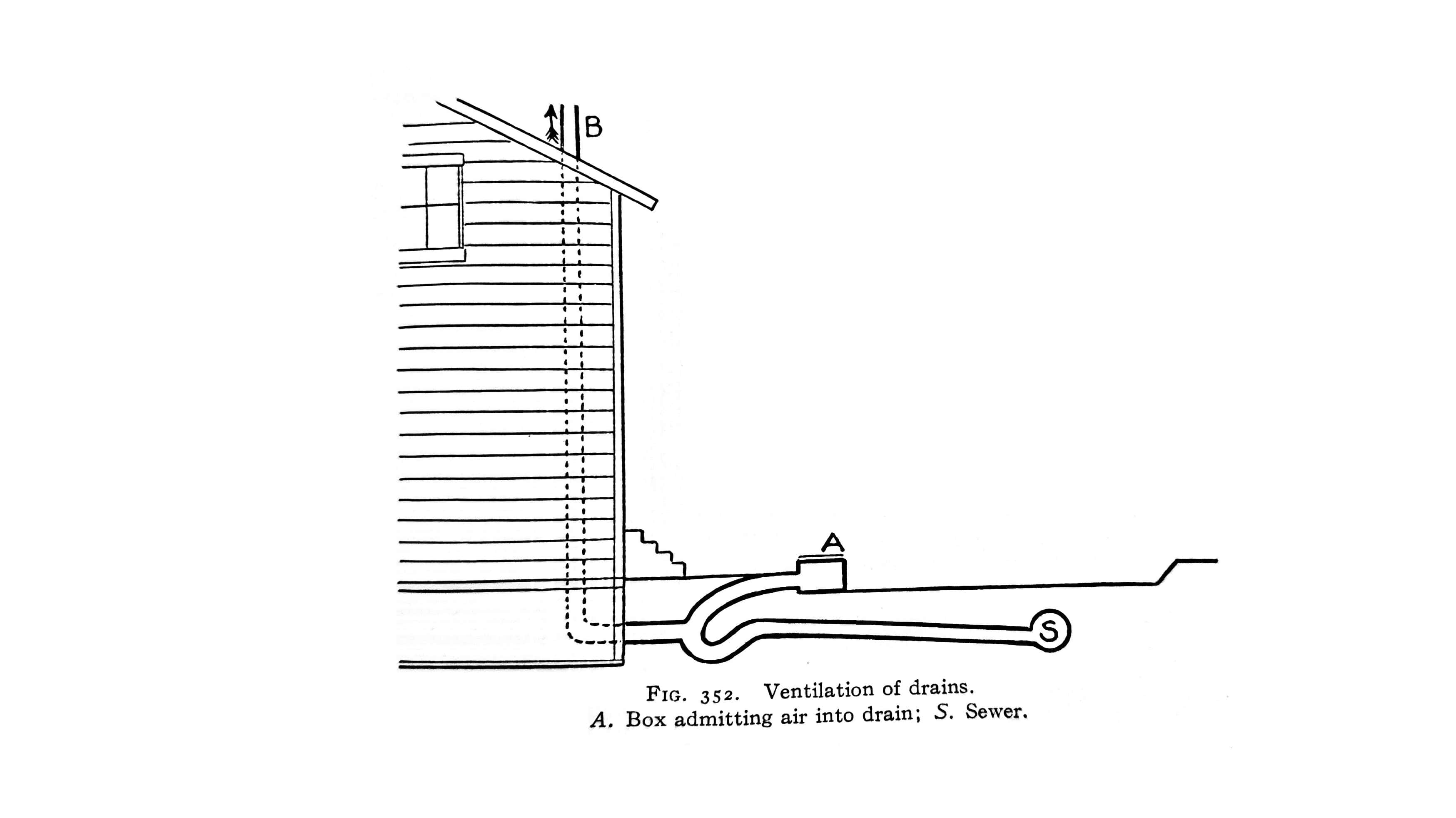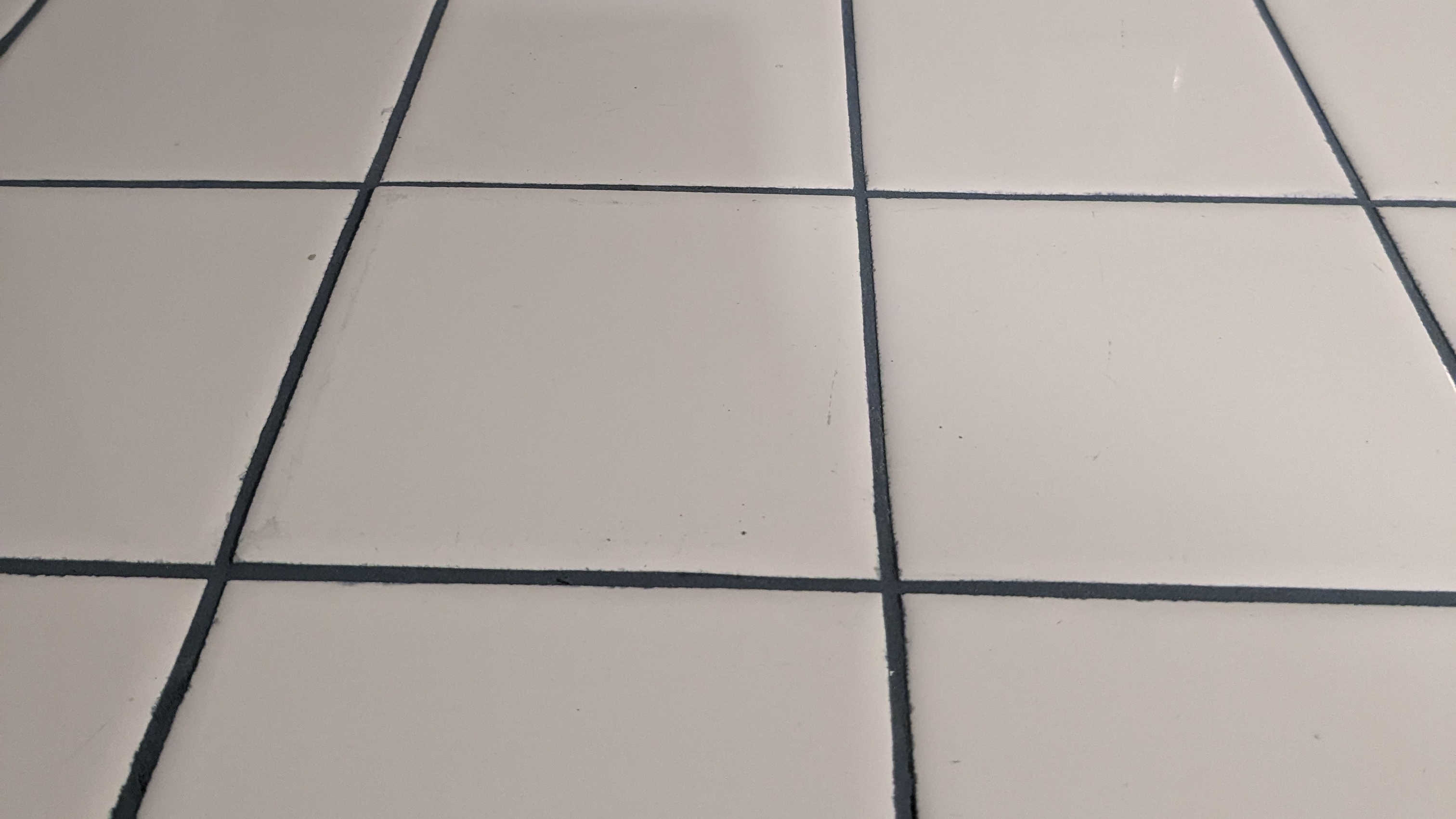Click here if you missed Part 1 and here if you missed Part 2 of this series.
Plumbing
The essential principles of perfect plumbing are (1) good materials, (2) careful workmanship, and (3) thorough ventilation of all drains, traps, and fixtures. Formerly light-weight soil- and waste-pipes were used, often cracked or full of sand-holes. Now nothing but “standard” iron pipe is permitted, which has been tested by water-pressure, and which has deep hubs so that secure joints can be made. Galvanized iron is also used for the work, and ensures that the pipes are gas-tight. When the house is completed the whole drainage system is tested by water- or air-pressure or with oil of peppermint as a guarantee that everything is safe.
Formerly all drains and soil-pipes, and most plumbing-fixtures, were boxed in so as to be inaccessible, thus affording spaces to harbor vermin and foster decay and damp. Now exposed plumbing is the rule, while wooden wash-tubs, tin-lined baths, and iron slop-sinks have been superseded by porcelain or enameled-iron fixtures which are clean and sweet. A model tenement house of the present time is more sanitary in this respect than the millionaire’s mansion of twenty years ago.
Next to durability of materials comes quality of workmanship. The plumber of former days was a mere tinker with neither skill nor training; now he is a highly-paid capable mechanic and his work is superior. All soil- and waste-pipes are concentrated as much as possible, and are run in straight lines with the fewest possible bends. All traps are placed close to fixtures, and every fixture must be trapped separately except in the case of kitchen-sinks and wash-tubs in moderate-priced flats and tenements. Water-closets must be flushed by cisterns, and not by direct pressure; valve closets for servants’ use are tabooed.
House Drains
Whether the house drain should be of cast iron or earthenware is an open question. It is preferable to have a cast-iron drain carried with a good fall (one in sixty) along the side-wall, rather than to have an underground tile pipe which is liable to crack or be damaged by roots of trees, rats, etc. In good practice only iron pipe is permitted within doors, and tile pipe outside the building. The iron pipe should be carried three feet outside the foundation walls in order to avoid any risk of breakage from the building settling.
The Laying of Drains
The laying of underground drains is usually entrusted to unskilled laborers; yet it should be carefully done under competent supervision. Iron pipe is preferable indoors. If tile pipe is chosen for economy’s sake, a ditch should be dug two feet wide so as to give ample room for action; the bottom should be beaten hard, and have a grade of one food in sixty, a slot to receive each hub. The cement should fill the entire circle of the hub, and after laying each length of pipe the interior should be scraped clean with a piece of rattan having a swab at one end to remove all obstructions.
Soil-Pipes
The first soil-pipes were of lead, and hand-made. They are still used in Great Britain, but in the United States they have been replaced by iron, owing to the risk of sagging, corrosion, driving nails, and gnawing rats. About 1867 it was found the the lead at the crown of water-closet traps ate through and allowed sewer gas to escape. The soil-pipes at first reached only as far as the bathroom or second floor; but upon this discovery being made they were extended to five and six inches and the end divested of cowls and “return-bonds” which tend to close the pipe by freezing of condensed moisture.
Ventilation of Drains
Even if house drains are of good material and properly connected, there is still risk of the traps or fixtures losing their seal by evaporation or siphonage, so as to permit the entrance of sewer-gas into living rooms. A thorough circulation of air is therefore necessary throughout the entire drainage system, so that in case of a leak or accident only diluted foul air can escape. To secure such ventilation a running trap is placed upon the main drain between the house and the sewer or cesspool, with a fresh-air inlet from just inside the trap extended to the ground-level and ending in an open box covered by an iron grating which should be kept free from dirt. The air entering at this opening will circulate through the whole drainage, and pass out at the roof so as to ventilate every pipe and drain.
To be continued….
- From The Standard Family Physician: A Practical International Encyclopedia of Medicine and Hygiene Especially Prepared for the Household. Copyright 1907 by Funk & Wagnalls.





Leave a Reply